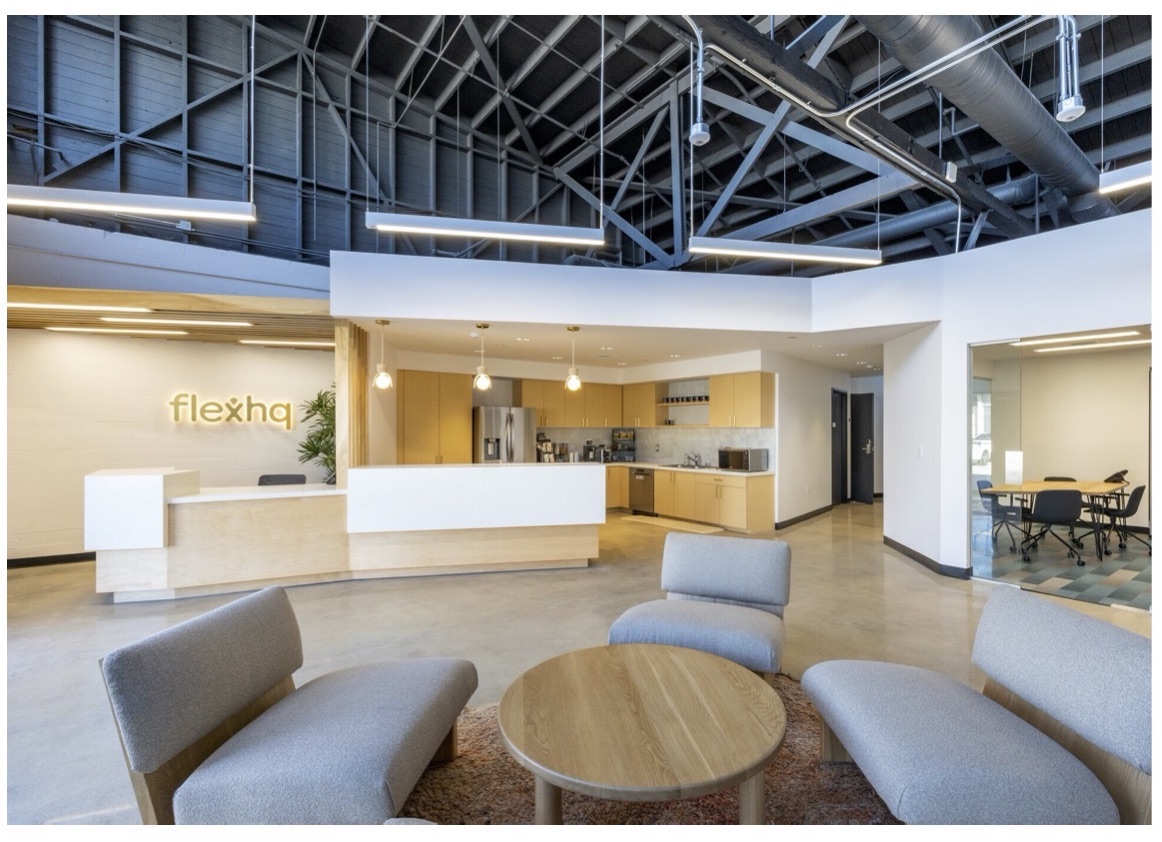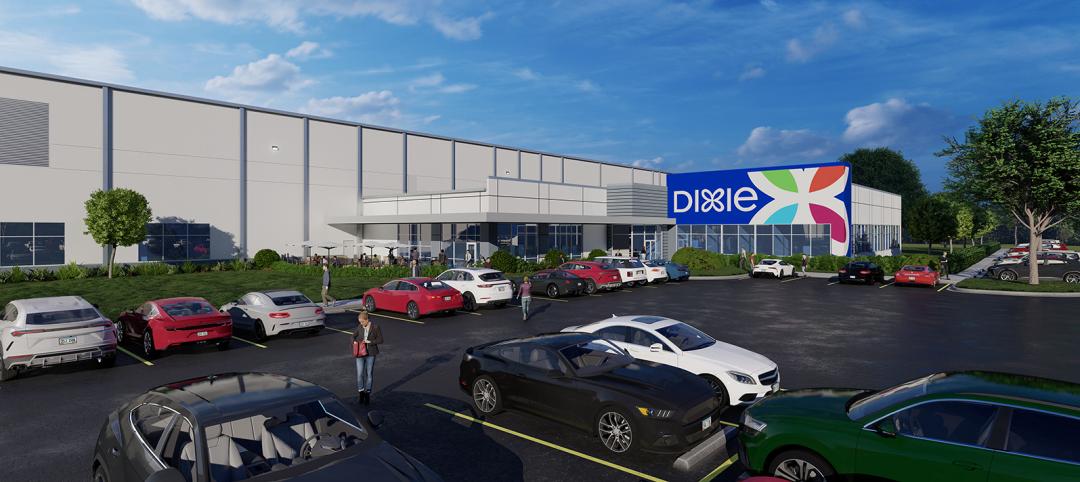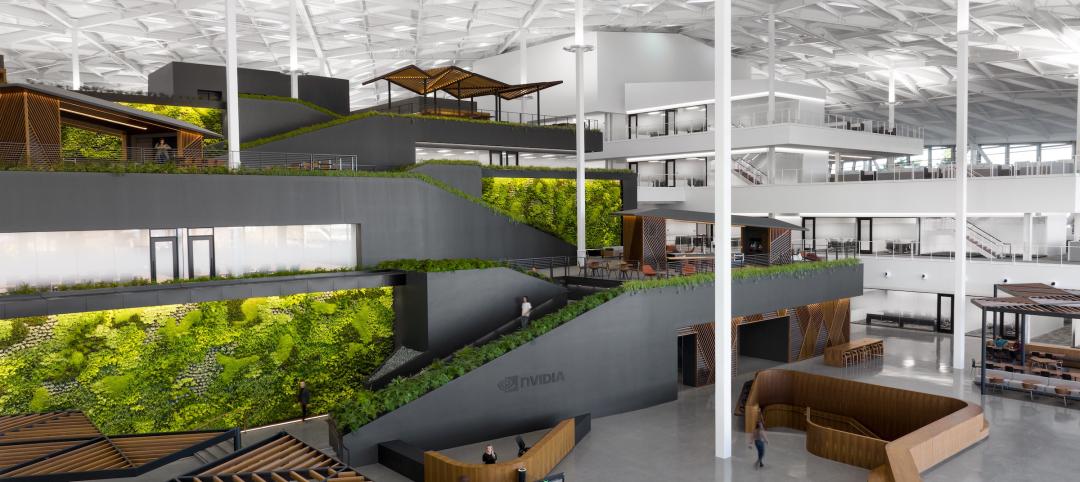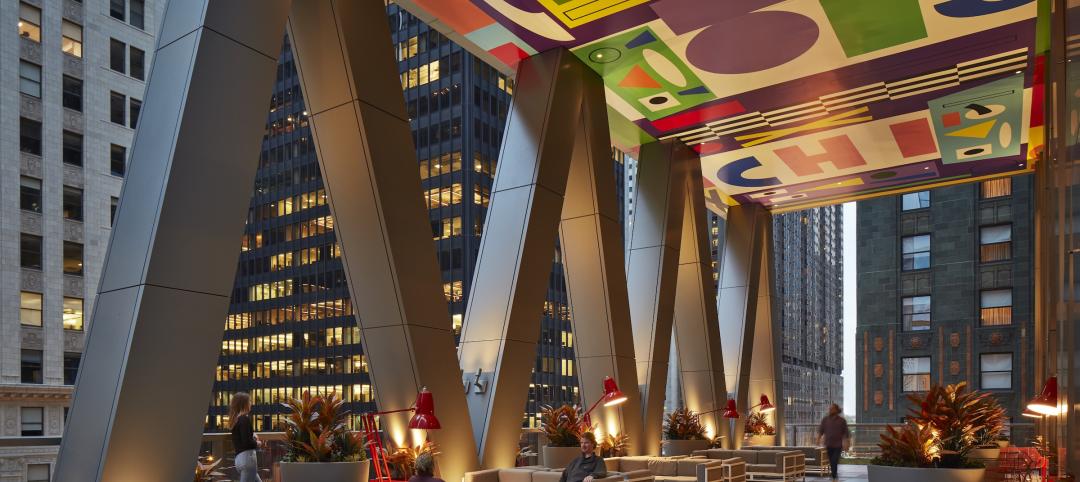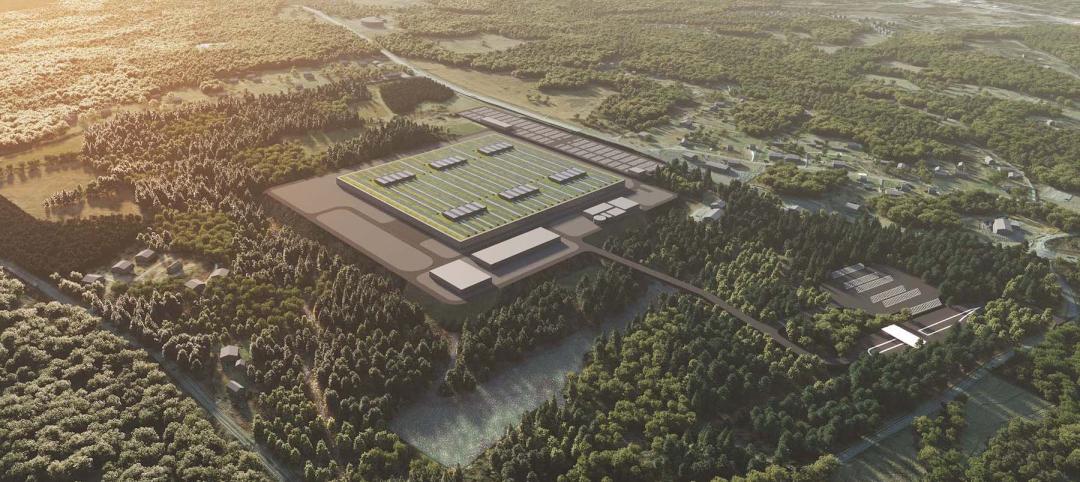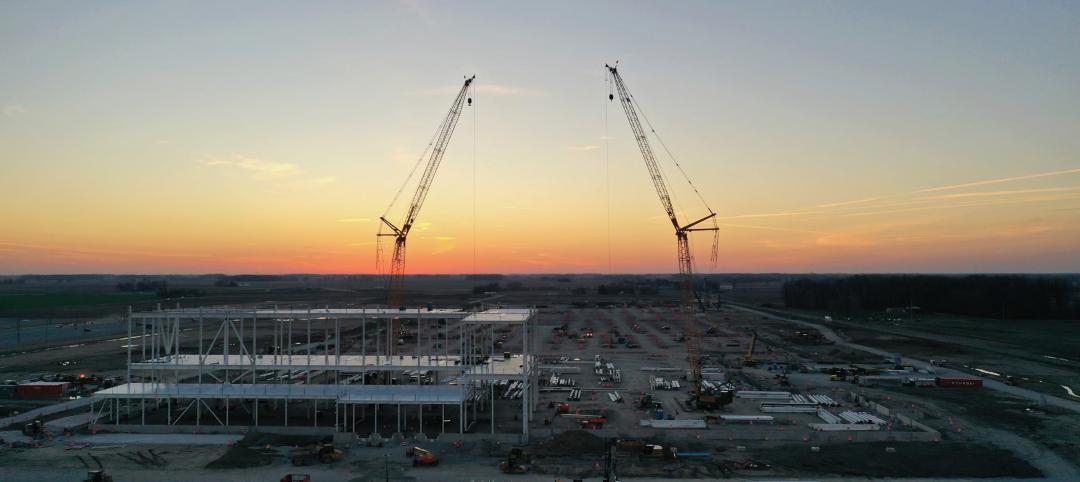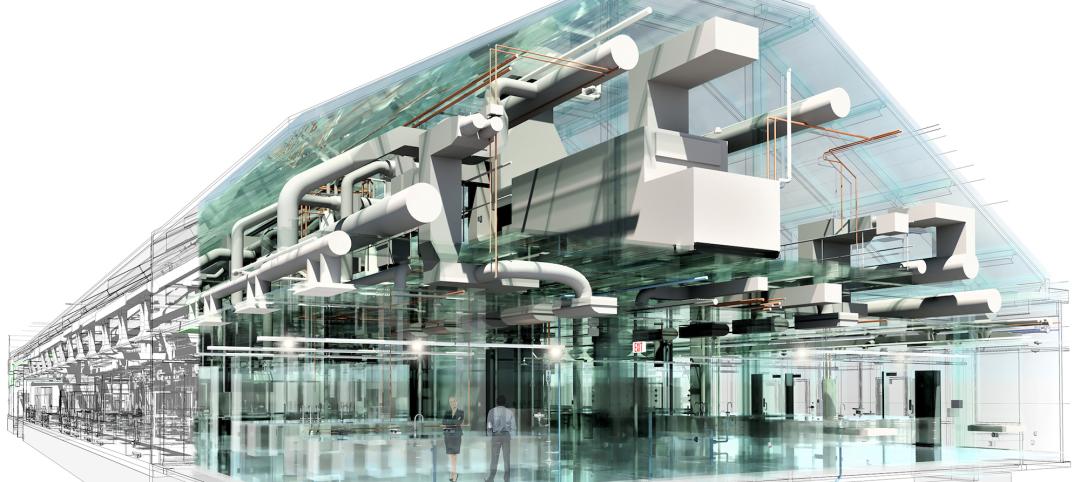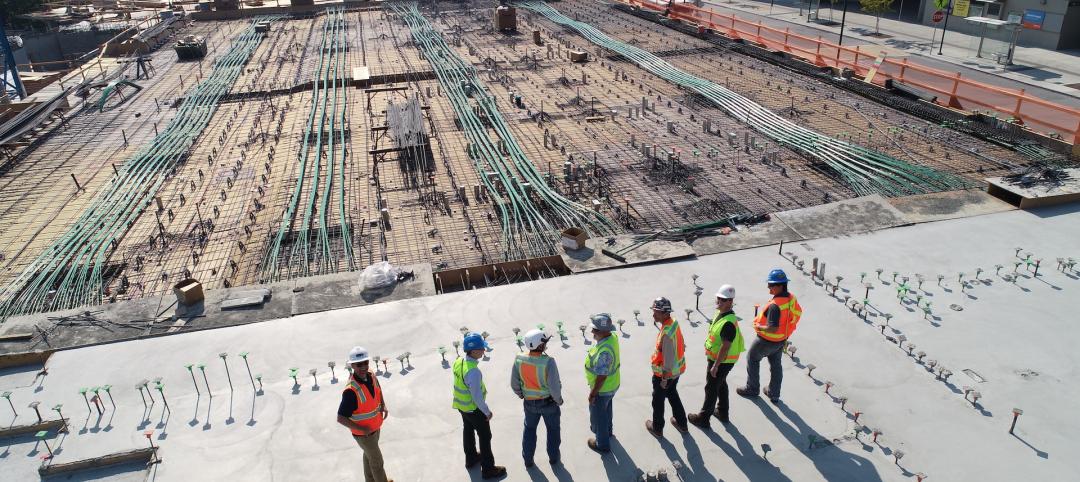The design firm Ware Malcomb has partnered with FlexHQ, a Los Angeles-based firm offering cowarehouse leasing solutions, to create a scalable workspace that emphasizes leasing flexibility and higher-quality and environmentally friendlier amenities than aren’t commonly found in this building type, say representatives from both companies.
Late last year, FlexHQ—which is backed by the self-storage company Storage Etc. and real estate developer KOAR International—opened its first location, a 50,000-sf warehouse in Los Angeles that offered warehouse and office spaces ranging from 300 to 3,000 sf. Sometime this summer, FlexHQ is scheduled to open a 75,000-sf cowarehouse in Denver with 67 warehouse spaces of varying sizes, along with 21 private offices, and amenities that include high-speed internet, conference rooms, daily shipping and receiving services, a communal kitchen, a professional photo studio, and podcast studio.
The Denver Post reported that FlexHQ paid $10.8 million to acquire the Denver building in September 2022. FlexHQ intends to own its cowarehouses as it grows. FlexHQ’s immediate expansion plans call for opening cowarehouses in Salt Lake City and Dallas, according to Laurent Opman, the company’s cofounder, in response to emailed questions from BD+C. The company is also exploring growth opportunities in Florida and Tennessee.
Opman says that FlexHQ was attracted to Ware Malcomb’s “deep experience” in industrial and warehouse architecture, its nationwide offices, and its close relationship with CBRE, which is providing construction management services for FlexHQ’s projects. Other members of the Building Team on the Denver project are the GC Alcorn Construction, and a local architect Intergroup Architects.
A sustainable interior design for cowarehouse facility
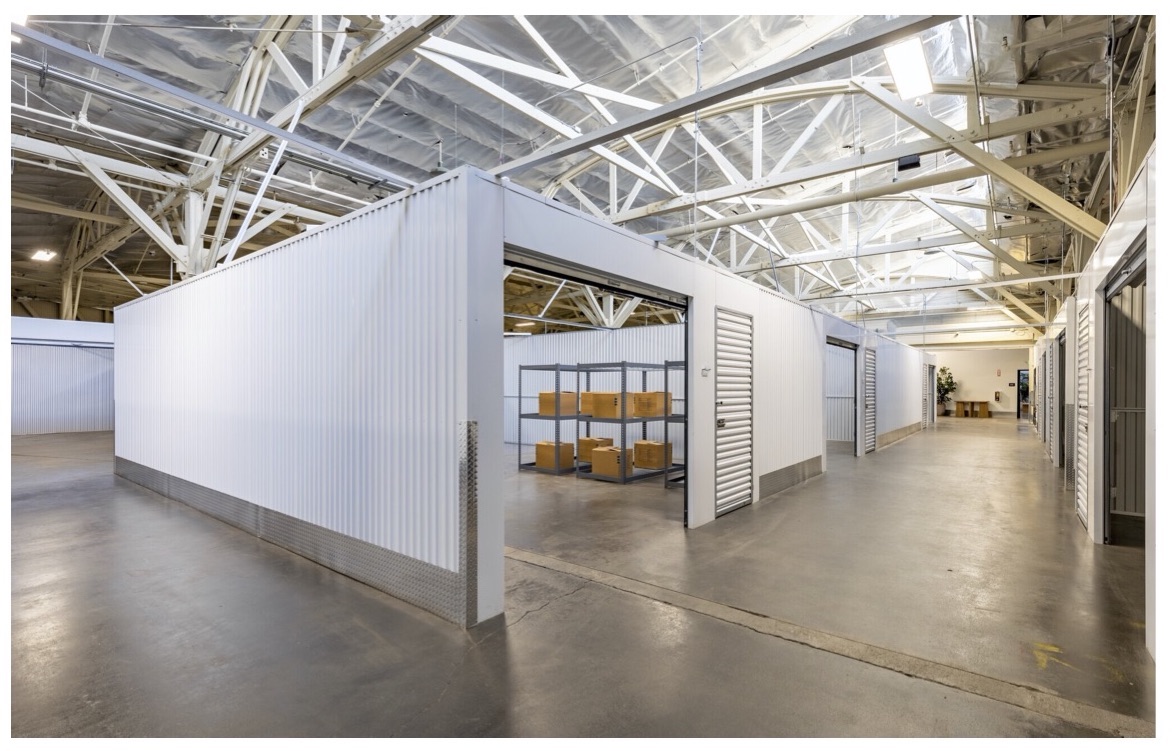
FlexHQ has entered what can best be described as a crowded but fragmented competitive field, led by Cubework, with around 80 locations nationwide and in Canada, and several other locations scheduled to open soon, according to its website. Saltbox, with 10 locations, touts is cowarehouses as “built by entrepreneurs for entrepreneurs.”
By offering space options, FlexHQ is appealing to startups and smaller businesses that are seeking lease flexibility as their companies’ needs change. FlexHQ, says Opman, is “rooted in the experience of its founders” in commercial real estate acquisition and development, with an emphasis on adaptive reuse. Opman adds that FlexHQ is focused on “delivering the best locations, high quality improvements, and the highest level of operation and user’s experience.”
In addition to EV charging stations, Ware Malcomb’s sustainable design for the Denver location includes upgrading and retrofitting the building’s entire lighting system, and using recycled building materials, energy saving fixtures, and green technologies that reduce the facility’s carbon footprint.
What’s different from competitors’ cowarehouses, says Hardev, is an “elevated design” with natural materials “to bring warmth to a space that is generally seen as a stark and cold environment.” Branding and graphics for wayfinding provide a “curated cowarehousing space where businesses feel a sense of community as well as foster creative energy.”
The communal experience that FlexHQ is striving to create might present price barriers for some tenants. Opman told Bisnow.com that the average rent for space in its Los Angeles facility is about 2.5 times higher than the average warehouse space, and twice what self-storage would charge.
Combining warehouse and office spaces also presents some design and engineering challenges, says Bhavini Hardev, Ware Malcomb’s Studio Manager. She explains that acoustics, functionality, user friendliness, and security are the focal points of the layout whose quiet office spaces must coexist with noisier loading and storage areas. The design takes these adjacencies into account with “strategic placement” of rooms and materials.
Related Stories
Industrial Facilities | Sep 6, 2023
Georgia-Pacific pushes forward on construction of newest industrial building in Tennessee
The 900,000-sf manufacturing/warehousing facility will support the company’s disposable tableware brands when it opens next year.
Giants 400 | Aug 22, 2023
Top 115 Architecture Engineering Firms for 2023
Stantec, HDR, Page, HOK, and Arcadis North America top the rankings of the nation's largest architecture engineering (AE) firms for nonresidential building and multifamily housing work, as reported in Building Design+Construction's 2023 Giants 400 Report.
Giants 400 | Aug 22, 2023
2023 Giants 400 Report: Ranking the nation's largest architecture, engineering, and construction firms
A record 552 AEC firms submitted data for BD+C's 2023 Giants 400 Report. The final report includes 137 rankings across 25 building sectors and specialty categories.
Giants 400 | Aug 22, 2023
Top 175 Architecture Firms for 2023
Gensler, HKS, Perkins&Will, Corgan, and Perkins Eastman top the rankings of the nation's largest architecture firms for nonresidential building and multifamily housing work, as reported in Building Design+Construction's 2023 Giants 400 Report.
Industrial Facilities | Aug 22, 2023
Rising battery demand charges industrial plant construction
Several U.S. factories are being built in partnership with automakers.
Industrial Facilities | Aug 3, 2023
The state of battery manufacturing in the era of EV
One of the most significant changes seen in today’s battery plant is the full manufacturing process—from raw materials to the fully operational battery.
Market Data | Aug 1, 2023
Nonresidential construction spending increases slightly in June
National nonresidential construction spending increased 0.1% in June, according to an Associated Builders and Contractors analysis of data published today by the U.S. Census Bureau. Spending is up 18% over the past 12 months. On a seasonally adjusted annualized basis, nonresidential spending totaled $1.07 trillion in June.
Digital Twin | Jul 31, 2023
Creating the foundation for a Digital Twin
Aligning the BIM model with the owner’s asset management system is the crucial first step in creating a Digital Twin. By following these guidelines, organizations can harness the power of Digital Twins to optimize facility management, maintenance planning, and decision-making throughout the building’s lifecycle.
Market Data | Jul 24, 2023
Leading economists call for 2% increase in building construction spending in 2024
Following a 19.7% surge in spending for commercial, institutional, and industrial buildings in 2023, leading construction industry economists expect spending growth to come back to earth in 2024, according to the July 2023 AIA Consensus Construction Forecast Panel.
Standards | Jun 26, 2023
New Wi-Fi standard boosts indoor navigation, tracking accuracy in buildings
The recently released Wi-Fi standard, IEEE 802.11az enables more refined and accurate indoor location capabilities. As technology manufacturers incorporate the new standard in various devices, it will enable buildings, including malls, arenas, and stadiums, to provide new wayfinding and tracking features.


